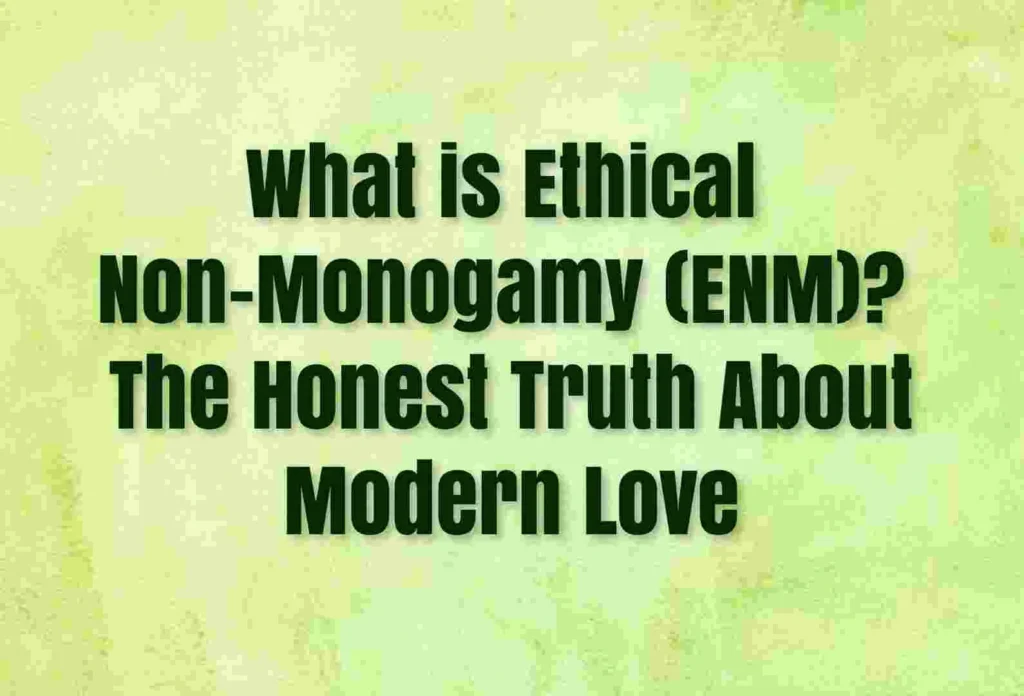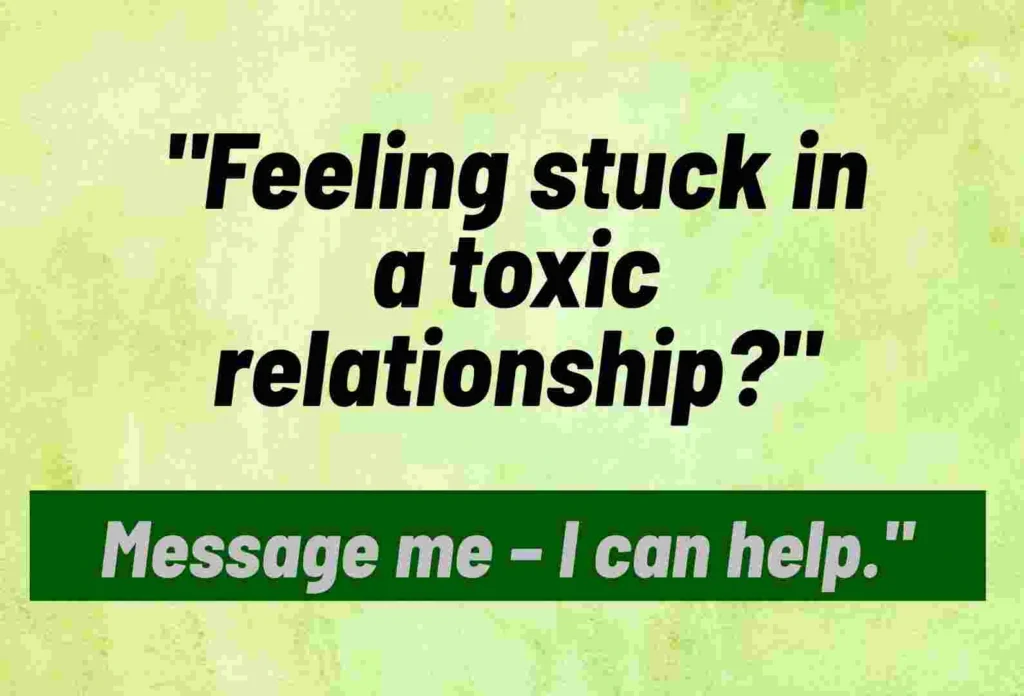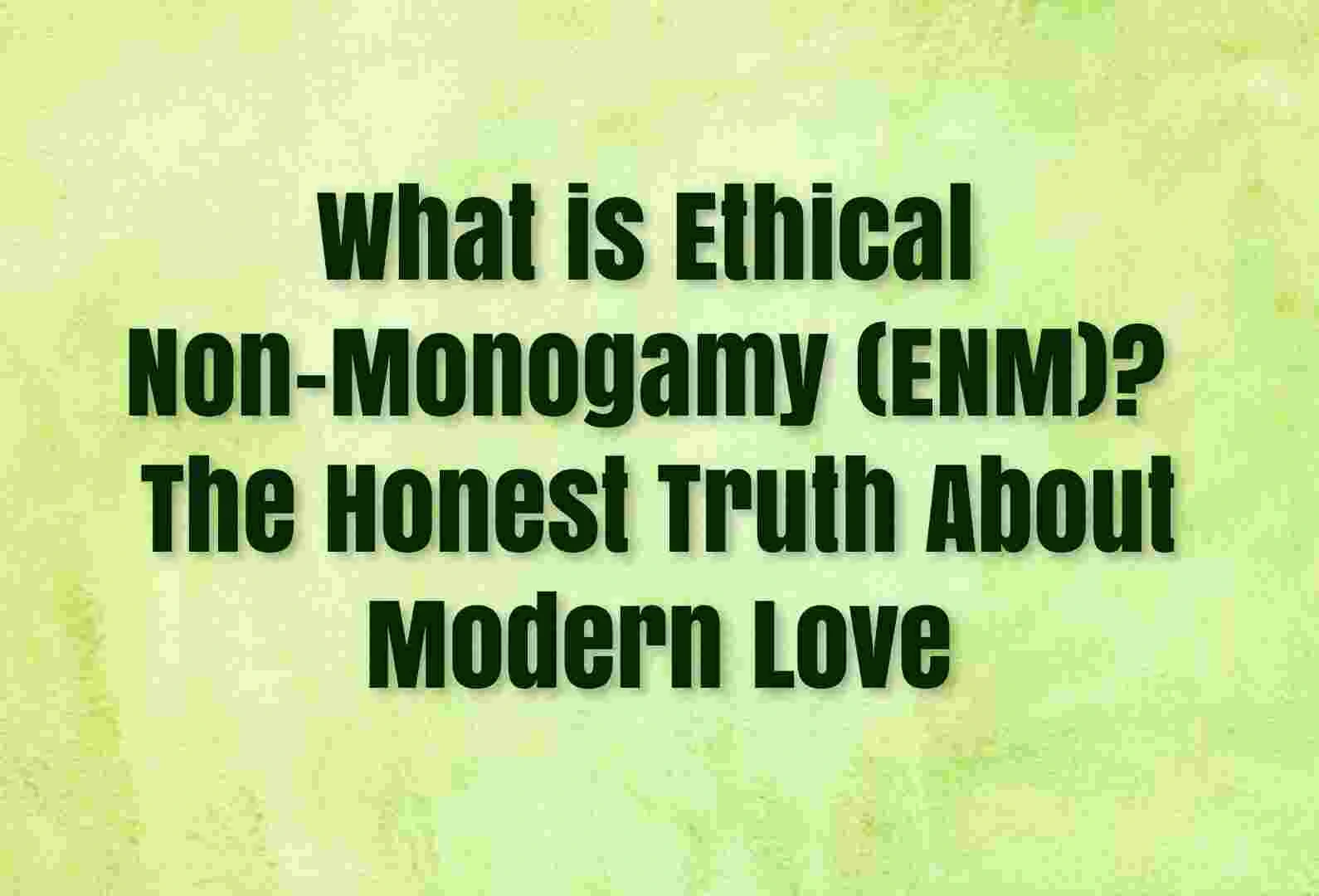What if love didn’t have to fit inside a single box?
Ethical Non-Monogamy (ENM) is not a flashy trend or a synonym for cheating — it’s a deliberate, honest way of arranging relationships that puts consent, communication, and care at the center. More people are asking whether monogamy is the only route to deep connection, and ENM offers real, practical alternatives: polyamory, open relationships, swinging, and relationship-anarchy, each with different rules but the same ethical backbone.
This post is a straight-talk guide for curious minds. I’ll cut through the noise and common myths, explain what ENM actually looks like in daily life, and give you practical tools — conversation scripts, simple boundary templates, and jealousy-management ideas — so you can think clearly about whether ENM is right for you or your relationship. No moralizing, just clear information and usable steps.
If you’re ready to question assumptions and learn how honest non-monogamy works in the real world, keep reading — the next section will define ENM and map the different forms it takes.

What is Ethical Non-Monogamy (ENM)?
Ethical Non-Monogamy, often shortened to ENM, is a relationship approach where all partners openly agree that having multiple romantic or sexual connections is acceptable. The word ethical is key here — it’s about honesty, consent, and mutual respect, not secrecy or betrayal.
In ENM, everyone involved knows about the arrangement and chooses it willingly.
This makes it very different from cheating, where one person breaks agreed-upon boundaries without the other’s knowledge. ENM is built on transparency, so no one is left in the dark.
ENM can take many forms — some people practice polyamory, where they have multiple loving, committed relationships.
Others prefer open relationships, where emotional commitment stays with one partner, but sexual exploration with others is allowed.
There’s also swinging, which focuses on shared sexual experiences, and relationship anarchy, where people design their relationships without following traditional rules.
At its core, ENM is not about “more partners = more fun.
It’s about creating a relationship structure that fits your values, needs, and emotional capacity — with everyone’s informed consent.
Want to explore the different types of ENM in detail? I’ve broken them down with examples in my complete guide to Ethical Non-Monogamy.
Types of ENM
| Type of ENM | Description | Key Focus | Pros | Challenges |
|---|---|---|---|---|
| Polyamory | Having multiple loving, committed relationships with the knowledge and consent of everyone involved. | Emotional + Romantic connections | Deep emotional fulfillment, multiple sources of support | Time management, potential jealousy |
| Open Relationship | A primary emotional/romantic partnership where partners agree to have sexual experiences with others. | Sexual freedom, emotional exclusivity | Maintains emotional security while exploring sexually | Risk of emotional boundaries being blurred |
| Swinging | Couples engage in sexual activities with other couples or individuals, usually in a shared setting. | Shared sexual experiences | Can strengthen communication and trust between partners | Requires strong comfort levels with sexual sharing |
| Relationship Anarchy | Rejects predefined relationship rules; partners design their own commitments and boundaries. | Freedom, self-defined relationship structure | Maximum flexibility, no societal constraints | Can feel unstable without clear agreements |
| Solo Polyamory | Maintaining multiple relationships while prioritizing independence and not having a primary partner. | Autonomy, non-hierarchical love | High personal freedom, control over one’s time | May feel less supported in crises |

Core Principles of Ethical Non-Monogamy (ENM)
Every successful ENM relationship stands on a few non-negotiable pillars. Without these, the arrangement quickly crumbles into misunderstandings, hurt feelings, and mistrust.
Whether you’re exploring polyamory, an open relationship, or any other ENM form, these core principles will guide you toward healthy, respectful connections.
1. Consent
In ENM, consent isn’t just about physical intimacy — it’s about the entire arrangement. Every person involved should fully understand and agree to the structure of the relationship. No one should feel pressured or tricked into accepting something they’re not comfortable with.
2. Honesty
Transparency is the foundation of trust. This means being open about your intentions, feelings, and experiences — even when it’s uncomfortable.
Half-truths or “protective lies” often cause more damage than the truth itself.
3. Communication
In ENM, you can’t assume your partner “just knows” what you want or how you feel. Regular, clear conversations about boundaries, needs, and emotional well-being are essential.
It’s not over-communicating — it’s relationship maintenance.
4. Boundaries
Boundaries protect emotional safety and prevent burnout. These can include limits on time spent with other partners, types of intimacy allowed, or how much information is shared about other relationships.
Boundaries are not walls — they are agreements that keep trust alive.
5. Mutual Respect
Every person in the network of relationships deserves to be treated with dignity, regardless of whether they are your primary partner or a secondary connection. Respect is what keeps ENM ethical.
Quick takeaway:
Without these principles, ENM stops being “ethical” and starts resembling the very secrecy it’s meant to avoid. Think of them as the relationship rulebook you write together — and then follow consistently.
Common Myths About Ethical Non-Monogamy (and the Truth)
Like any relationship model that challenges tradition, ENM is surrounded by stereotypes and half-truths. These myths often come from misunderstanding, media exaggeration, or confusing ENM with unhealthy behavior. Let’s clear the air.
Myth 1: ENM is just about sex
The Truth: While sexual freedom can be a part of ENM, many people choose it for emotional connection, variety in companionship, or personal growth.
In polyamory, for example, the emotional bond is just as important — sometimes even more than physical intimacy.
Myth 2: People in ENM can’t commit
The Truth: Commitment in ENM looks different, but it’s still real. Many ENM partners make long-term commitments, share finances, raise children, and build stable homes — they simply do so while being open to other romantic or sexual connections.
Myth 3: ENM is the same as cheating
The Truth: Cheating involves breaking trust by hiding actions from your partner. ENM is the opposite — it’s based on transparency and mutual agreement. In fact, ENM often demands more honesty than traditional relationships.
Myth 4: Jealousy makes ENM impossible
The Truth: Jealousy happens in all types of relationships. In ENM, the difference is that jealousy is acknowledged, discussed, and managed instead of being ignored or denied. Many people find that practicing ENM helps them understand and reduce jealousy over time.
By breaking these myths, it becomes clear that ENM isn’t a “free-for-all” or an escape from responsibility. It’s a relationship style that requires intention, emotional maturity, and excellent communication.
Challenges You Might Face in Ethical Non-Monogamy
Like every form of relationship, Ethical Non-Monogamy isn’t just endless romance and freedom. It also comes with challenges that demand emotional maturity, self-awareness, and consistent communication.
Being aware of these hurdles beforehand can help you decide whether ENM truly matches your values and emotional readiness.
1. Managing Jealousy
Even the most confident person can feel moments of insecurity.
In ENM, jealousy isn’t proof that you’ve failed — it’s a signal that something within the dynamic needs care and attention.
Solution
Instead of seeing jealousy as a threat, treat it as an opportunity to open up an honest conversation.
Identify and discuss your emotional triggers, agree on healthy boundaries, and remind yourself that love isn’t a pie that runs out when shared — it can grow with trust and understanding.
2. Balancing Time and Energy
With more than one partner, time management becomes a real challenge. Overcommitting can lead to emotional burnout or making someone feel neglected.
Solution
Using shared calendars, planning quality time, and being realistic about your availability can prevent misunderstandings.
3. Dealing with Social Stigma
Not everyone will understand or accept ENM. Friends, family, or coworkers might judge, gossip, or make assumptions.
Solution
Decide together how much you want to share publicly, and lean on supportive communities that understand your choices.
4. Emotional Overload
More connections mean more emotions — love, excitement, insecurity, joy, and sometimes heartbreak. Without healthy emotional regulation, ENM can become overwhelming.
Solution
Regular check-ins, self-care routines, and therapy (individual or couples) can help maintain balance.
5. Navigating Boundaries and Rule Changes
Relationships evolve, and so do boundaries. Something that felt okay six months ago may no longer feel right today.
Solution
In ENM, being flexible while still respecting agreements is essential to long-term harmony.
The challenges in ENM aren’t deal-breakers if you’re willing to address them with honesty, patience, and teamwork. In fact, facing these challenges head-on can strengthen your emotional intelligence — in any kind of relationship.
Why Ethical Non-Monogamy is Gaining Popularity
Not long ago, the idea of openly loving or dating more than one person was considered taboo in most cultures. Today, conversations about Ethical Non-Monogamy are showing up in podcasts, books, TV shows, and even casual dinner table discussions. So, what’s driving this shift?
1. Changing Views on Love and Commitment
Modern relationships are less about following one fixed social script and more about creating agreements that fit the people involved.
Many couples are realizing that commitment doesn’t have to mean exclusivity — it can mean honesty, mutual respect, and freedom to choose.
2. Influence of Global Media and Internet Communities
From Netflix documentaries to Reddit forums, ENM stories are reaching wider audiences than ever before. Exposure to real-life examples helps break stereotypes and sparks curiosity about alternative relationship structures.
3. Greater Emphasis on Mental Health and Communication
As people prioritize emotional well-being, they’re looking for relationship styles that encourage open dialogue about needs and boundaries.
ENM, when practiced ethically, demands high-quality communication — a skill many people now value as much as romance itself.
4. Desire for Personal Growth and Authenticity
Some individuals see ENM as a way to explore different sides of themselves without hiding or pretending. The focus is on building connections that feel authentic rather than fitting into roles that society prescribes.
5. Demographic and Cultural Shifts
Today’s younger generations—especially millennials and Gen Z—are showing a greater willingness to explore new forms of relationships.
As a result, conversations around Ethical Non-Monogamy are becoming far more frequent and comfortable than in the past.
The Takeaway:
Ethical Non-Monogamy isn’t here to erase monogamy; it’s simply creating an additional option for people who feel the traditional model doesn’t fit their lives.
Its growing visibility highlights a wider cultural shift toward personal choice, open communication, and relationships built on self-defined valuess.
Conclusion — Is ENM Right for You?
Ethical Non-Monogamy isn’t a quick fix or a “spice up your love life” trick. It’s a relationship model that requires emotional maturity, constant communication, and a willingness to challenge traditional beliefs about love. For some, it opens doors to deeper connection and personal growth. For others, it simply isn’t the right fit — and that’s okay.
If you’re curious about ENM, the best starting point isn’t diving headfirst into multiple relationships. Instead, begin with learning — about yourself, your values, and the skills that make ENM work. Knowledge is your safety net, and it’s the difference between an enriching experience and a painful one.
Want to explore ENM in depth?
I’ve put together a comprehensive, beginner-friendly guide to Ethical Non-Monogamy that goes far beyond what we covered here. Inside, you’ll find:
- Detailed explanations of different ENM styles
- Step-by-step strategies for navigating jealousy
- Real-world communication scripts
- Insights from people successfully living ENM lifestyles
- Practical tips for setting and adjusting boundarieWhether you’re single, partnered, or just curious, this ebook will give you the clarity and confidence you need to make informed decisions about your love life.


